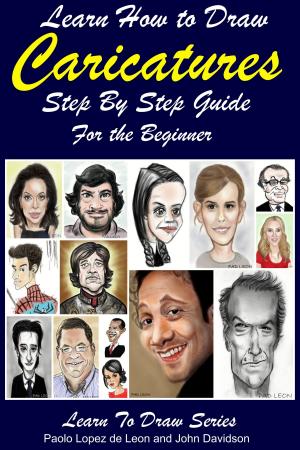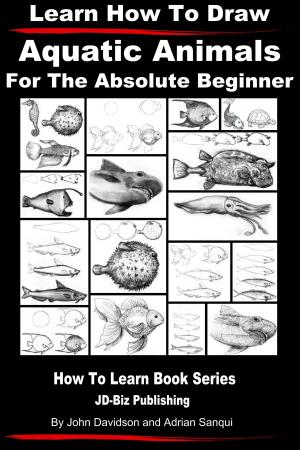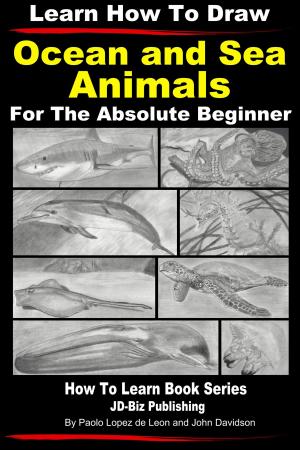Learn How to Draw Human Figures: For the Absolute Beginner
Nonfiction, Art & Architecture, Art Technique, Pencil, General Art, Home & Garden, Crafts & Hobbies| Author: | John Davidson, Adrian Sanqui | ISBN: | 9781310300882 |
| Publisher: | JD-Biz Corp Publishing | Publication: | February 15, 2014 |
| Imprint: | Smashwords Edition | Language: | English |
| Author: | John Davidson, Adrian Sanqui |
| ISBN: | 9781310300882 |
| Publisher: | JD-Biz Corp Publishing |
| Publication: | February 15, 2014 |
| Imprint: | Smashwords Edition |
| Language: | English |
Learn How to Draw Human Figures - For the Absolute Beginner
Table of Contents
Introduction:
Drawing Tools
Body Proportions
-Body Shape
-Polygonal Form
-Ball Joints
Arms
Legs
Muscle Structure
Heads
Clothing
Proportioning the body structure properly is important when drawing a person. A disproportionate body will mislead the portrayed perspective of your subject. Or worse, the subject might look distorted and deformed.
Knowing the proper length for your subject (the person or character you are drawing) can be easily achieved by drawing the head first. In this way, the traditional method in laying out the proper proportion of the body can be initiated.
The traditional method of approximating the body proportion of a subject is by using its head’s size.
The height of an average man is approximately eight to ten head’s size tall, while a women’s height is about seven to nine head’s size.
If your subject/character is eight heads tall then the proportions should be as follows:
•The distance of the head/face to crotch is about four heads long.
•The arms including the hands from the shoulders are closely four heads long.
•An average opened hand is usually equal to or almost one head size. While the length of a small hand can be compared to the length of the eyebrows to chin.
•The wrists are aligned or right above the level of crotch.
•The lower extremities/legs are about four heads long.
Adjustments are most effective by decreasing or increasing the length of each part by half head-size depending on your preferred height.
The wideness of the chest is usually two horizontal head’s size or more (two and half) depending on the body built you prefer for your subject. A subject having less than two head’s size will make its actual head look too big or a body proportion too skinny.
Take note that these proportions are just an approximation of an average person’s body structure. The measurements can change depending on the body type you prefer to portray, such as a long-legged subject would obviously have legs longer than four heads, or perhaps a shorter upper body to give his or her lower extremities more length. Adjustments are done according to the certain body characteristic of your subject based on his/ her function or purpose.
The body proportion should also match the age of your subject.
A person that is eight-heads tall effectively portrays an average adult, but it is most unlikely the case when portraying a pre-teen. Considering that the subject will have a smaller head which will be used to approximate his/her height, the number of heads used to convey how tall he/she is must be decreased as well.
Considering that an average man is eight heads tall…
•A young adult can be seven to seven and half heads tall
•A teenager can be six to seven heads tall.
•A young child can be five to six and half head tall.
•A toddler can be four to five heads tall.
Notice how the head measurements adjust according to their age. An individual’s growth gradually decreases as he/she reaches adulthood. But certain measurements and alignments are still implied no matter how old the subject is, such as the comparative length (per head’s size) of arms and legs and the same level of wrists to the crotch
Learn How to Draw Human Figures - For the Absolute Beginner
Table of Contents
Introduction:
Drawing Tools
Body Proportions
-Body Shape
-Polygonal Form
-Ball Joints
Arms
Legs
Muscle Structure
Heads
Clothing
Proportioning the body structure properly is important when drawing a person. A disproportionate body will mislead the portrayed perspective of your subject. Or worse, the subject might look distorted and deformed.
Knowing the proper length for your subject (the person or character you are drawing) can be easily achieved by drawing the head first. In this way, the traditional method in laying out the proper proportion of the body can be initiated.
The traditional method of approximating the body proportion of a subject is by using its head’s size.
The height of an average man is approximately eight to ten head’s size tall, while a women’s height is about seven to nine head’s size.
If your subject/character is eight heads tall then the proportions should be as follows:
•The distance of the head/face to crotch is about four heads long.
•The arms including the hands from the shoulders are closely four heads long.
•An average opened hand is usually equal to or almost one head size. While the length of a small hand can be compared to the length of the eyebrows to chin.
•The wrists are aligned or right above the level of crotch.
•The lower extremities/legs are about four heads long.
Adjustments are most effective by decreasing or increasing the length of each part by half head-size depending on your preferred height.
The wideness of the chest is usually two horizontal head’s size or more (two and half) depending on the body built you prefer for your subject. A subject having less than two head’s size will make its actual head look too big or a body proportion too skinny.
Take note that these proportions are just an approximation of an average person’s body structure. The measurements can change depending on the body type you prefer to portray, such as a long-legged subject would obviously have legs longer than four heads, or perhaps a shorter upper body to give his or her lower extremities more length. Adjustments are done according to the certain body characteristic of your subject based on his/ her function or purpose.
The body proportion should also match the age of your subject.
A person that is eight-heads tall effectively portrays an average adult, but it is most unlikely the case when portraying a pre-teen. Considering that the subject will have a smaller head which will be used to approximate his/her height, the number of heads used to convey how tall he/she is must be decreased as well.
Considering that an average man is eight heads tall…
•A young adult can be seven to seven and half heads tall
•A teenager can be six to seven heads tall.
•A young child can be five to six and half head tall.
•A toddler can be four to five heads tall.
Notice how the head measurements adjust according to their age. An individual’s growth gradually decreases as he/she reaches adulthood. But certain measurements and alignments are still implied no matter how old the subject is, such as the comparative length (per head’s size) of arms and legs and the same level of wrists to the crotch















